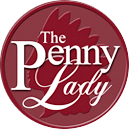By Charmy Harker (“The Penny Lady®”)
What do the Morro Castle cruise ship fire, the Hauptmann Lindbergh kidnapping trial, South Pole explorer Admiral Byrd, World Heavyweight Champion Boxer Joe Louis, the Lord’s Prayer, and Santa Claus have in common? Interestingly, they are all the subjects of “Capped Cents” created in the 1930’s by entrepreneurial numismatist Louis Werner who referred to them as his “Novel Cents.”
Louis S. Werner was born in New York in 1893. He was an active and innovative numismatist for 63 years who specialized in Jewish coins and U.S. paper money. Werner was instrumental in identifying, tracking down and convicting a major counterfeiter of commemorative half dollars. He also assembled one of the finest and most complete collections of numismatic Judaica and then donated the collection to the State Museum in Jerusalem in 1965. Werner was a very active member of the American Numismatic Association and received several prestigious awards, including the ANA’s Medal of Merit the second year it was awarded, the Farran Zerbe Memorial Award in 1959, and was named ANA Sergeant-at-Arms Emeritus in 1961. Louis Werner died July 13, 1982.
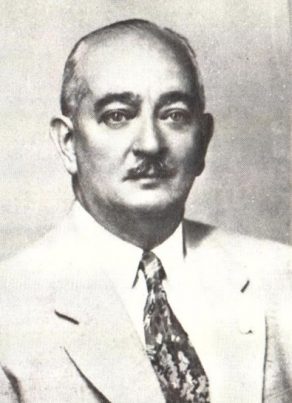
So what exactly are “Capped Cents”? During the height of the Great Depression in the 1930’s while people were struggling just to put food on their tables, a young numismatist and entrepreneur Louis Werner had an idea that he hoped would make a few dollars to help see his family through those tough times. Werner came up with an idea to create a portable press, which he later patented, that “capped” Lincoln cents with an embossed copper shell depicting contemporary popular events. He made eight dies with various motifs (including three different Santa Claus designs) which he called “Novel Cents.” He would set up his capping machine at significant events during the mid-1930’s where he knew a large crowd would be gathering and would sell each capped cent for 10 cents as souvenirs of that special event. He would only use brand new U.S. cents from 1934 and 1935, and on occasion he would use foreign cents. Werner also hired kids to sell his souvenir cents on street corners thereby allowing them to help contribute income to their own cash-strapped families. Depression-era Americans wanted “pieces of the action” and Werner’s capped cents memorializing important events were a big hit!
The SS Morro Castle Fire
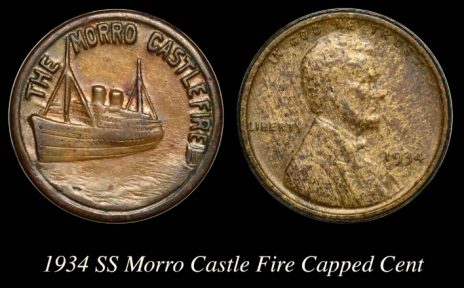
The Morro Castle ship was built in 1930 and was named for the Morro Castle fortress that guards the entrance to Havana Bay. It was built for its New York to Havana cruises and made one round trip every week.
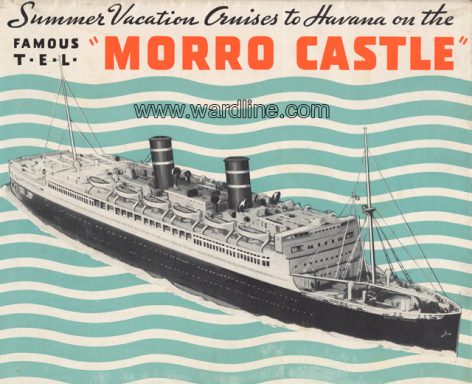
All repairs to the ship were either made at sea or put off completely so as to maintain its rigorous schedule. The captain purposely neglected to hold fire drills so as not to alarm or cause discomfort to the passengers, and the crew was poorly trained in firefighting. On this fateful trip, the captain died of a heart attack and the first officer took over control of the ship. A fire was discovered (later, the radio operator was suspected of arson) but the first officer kept the ship going full speed aimed directly into the wind which fanned the flames. The ship was finally stopped, but not in time for 137 passengers and crew (out of 549) who perished in the fire or were drowned in the icy waters (the initial death toll was erroneously listed in the newspapers as 186).
On September 8, 1934, while being towed to New York so a full investigation could be made, the tow line broke and the Morro Castle was beached by weather at Asbury Park, New Jersey, where it remained until March 1935 when it could be towed away and scrapped. It was later determined that the fire took so many lives due to inferior safety features on the ship, which eventually led to a great deal of new legislation requiring better quality safety measures aboard ships. To this day, there is still controversy and mystery surrounding the cause of the fire in one of the worst maritime disasters in American history.
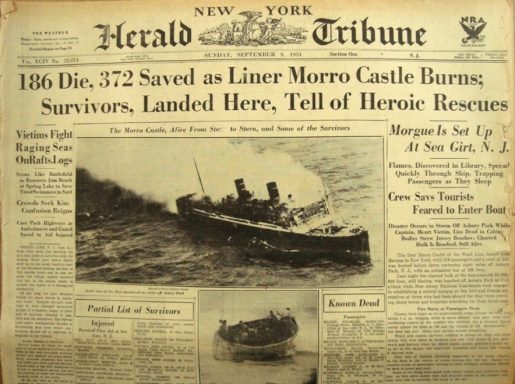
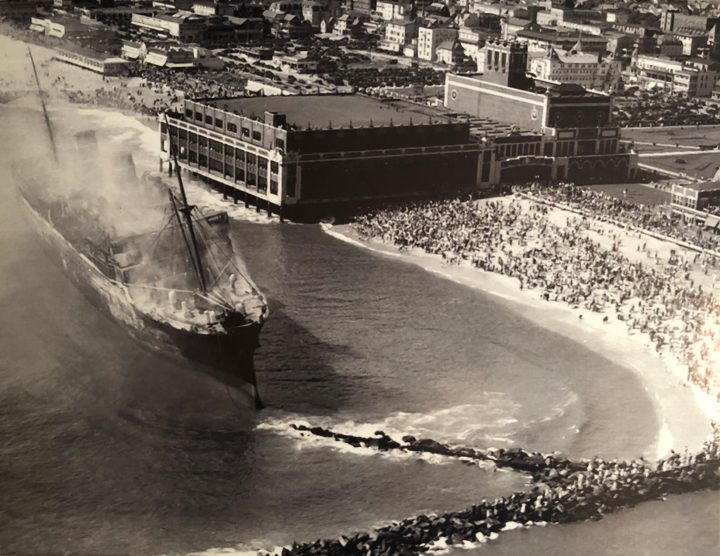
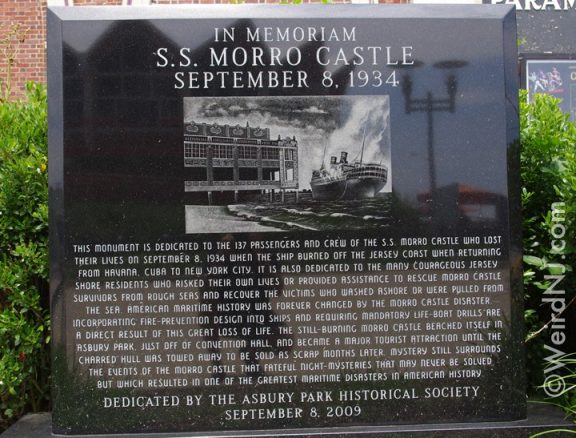
The convention hall was directly in front of where the ship was beached off the Jersey Shore. A sign was put up that read “22 cents to see the Morro Castle.” Within three weeks, over 100,000 people had paid their 22 cents to see the ship. Louis Werner saw an opportunity and was quick to create a Morro Castle Fire die and set up his capping machine right on the beach across from the burning ship. He began stamping out Morro Castle Fire capped Lincoln cents and sold them for 10 cents each. These souvenirs were such a big hit that Werner was selling them as fast as he could make them. He eventually moved into the convention hall along with other concessionaires who were selling post cards, elongated cents, and other morbid memorabilia of this tragic event.
The Hauptmann/Lindbergh Baby Kidnapping Trial
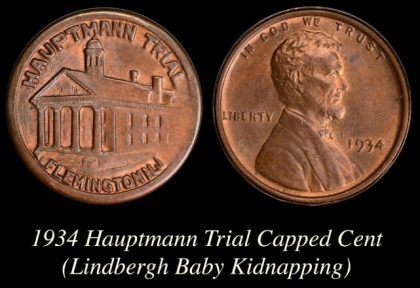
On March 1, 1932, the toddler son of famous aviator Charles Lindbergh was kidnapped from his crib in Hopewell, New Jersey. The child’s body was found on May 12 in the woods a few miles from the family home. In September 1934, Bruno Richard Hauptmann was arrested for the crime. During the trial, Hauptmann was identified as the man who was seen near the Lindbergh home on the day of the kidnapping and was identified as the man who received and spent some of the ransom money. Hauptmann was convicted and immediately sentenced to death. Hauptmann was executed in the electric chair at the New Jersey State Prison on April 3, 1936.
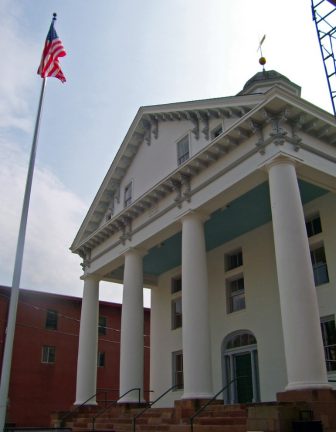
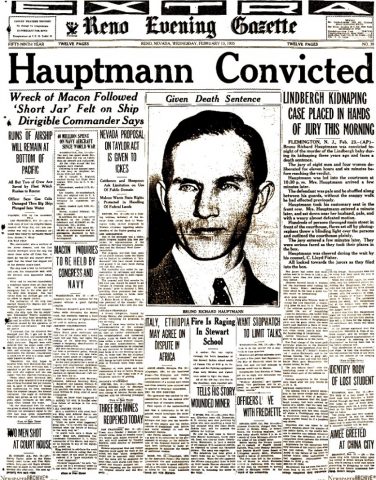
During the trial, Werner created a die depicting the Hunterdon County Courthouse where the Hauptmann trial took place. According to author Stanley Walker who wrote about current “hot topic” events in his 1935 book, “Mrs. Astor’s Horse,” Werner had set up his “metal press” on the porch of a nearby hotel with “several hundred bright new pennies and several fine strips of copper” placed on the stand next to the press. By running the copper strips through the press together with the pennies, Werner produced over 25,000 of the most bizarre souvenirs in numismatic history. According to Mr. Walker, Werner sold these pieces for 5 cents each or three for a dime.
There were those who objected to Werner’s capitalizing on and contributing to the carnival atmosphere during the Hauptmann trial, including the mayor of Flemington. At one point, the mayor ordered Werner to stop selling his capped cents. However, Werner already anticipated the possibility of such problems and had previously contacted the New Jersey attorney general. The attorney general provided Werner with a letter stating that he had no objection to Werner’s enterprises and that there was no law precluding him from selling his souvenirs during the trial. Werner had also used his friendship with New Jersey Governor, Harold Hoffman, to help him gain a monopoly on all coin-related souvenirs throughout the entire trial.
Polar Explorer Admiral Richard Byrd Jr.
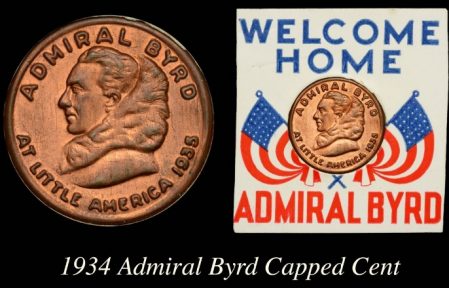
Real Admiral Richard E. Byrd Jr. was born on October 25, 1888. He was a pioneering explorer and was a recipient of the Medal of Honor, the highest honor for valor given by the United States. Byrd claimed that his expeditions had been the first ever to reach both the North Pole and the South Pole by air.
In 1926, Byrd was honored as being the first person to fly over the North Pole, although there is controversy as to whether he actually reached the North Pole. From 1928 to 1930, Byrd was the first to explore the Antarctic, including being the first to fly to the South Pole and back in 1929. He finally returned to the United States in 1930, right at the start of the Great Depression.
No one had ever spent the winter in the interior of Antarctica so on Byrd’s second Polar expedition in 1934, he planned to establish a meteorology station at the foot of the Transantarctic Mountains. However, they arrived late in March 1934 and his team ended up making camp at the Bolling Advance Weather Station 123 miles south of Little America. Byrd shortly thereafter decided to man the station alone for the next six months. At first, Byrd communicated with Little America regularly by Morse code. Then the men at base camp began receiving unusual radio transmissions from Byrd. They immediately dispatched a crew to the weather station. When they finally reached Byrd, they discovered he was in very poor health and had been suffering from carbon monoxide poisoning due to a clogged power generator.
When Admiral Byrd returned from his second exploration of the South Pole in 1934, Werner decided to create a die of Byrd’s portrait to commemorate his explorations at Little America. Werner and his capping machine were set up in the crowd of people who had gathered to welcome home the Admiral from another record-setting exploration. He also hired neighborhood kids to sell his popular Admiral Byrd capped cents on various street corners and ended up selling thousands at 10 cents each. And for a few extra cents, Werner included a special 2”x2” “Welcome Home” die cut card holder with the purchase of one of the Admiral Byrd capped cents. The Admiral Byrd capped cents that can be found still encased in these special die-cut holders are now very scarce. At one time, Werner’s Admiral Byrd capped cent was even on display at the Smithsonian’s National Air and Space Museum.
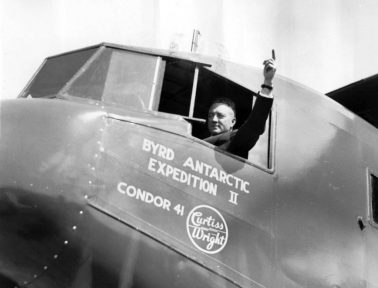
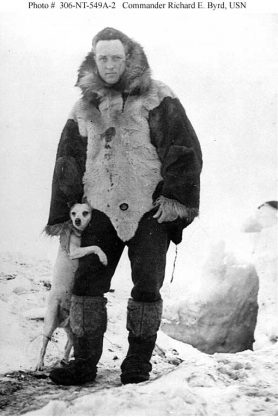
In addition to Werner’s capped cents, Byrd’s expedition is also commemorated on a U.S. postage stamp issued at the time. The 50-cent surcharge added to the cost of the stamp helped fund his expedition. Admiral Byrd was one of the few living Americans honored with a commemorative stamp. The Post Office went with Admiral Byrd and his crew when they left Norfolk, Virginia, for the Little America base camp. America’s first Post Office in Antarctica was officially established on October 6, 1933 and over 240,000 pieces of mail using it was sent from Byrd’s base at Little America. A postal employee worked under extremely difficult conditions to hand cancel all the envelopes for collectors. Byrd died March 11, 1957.
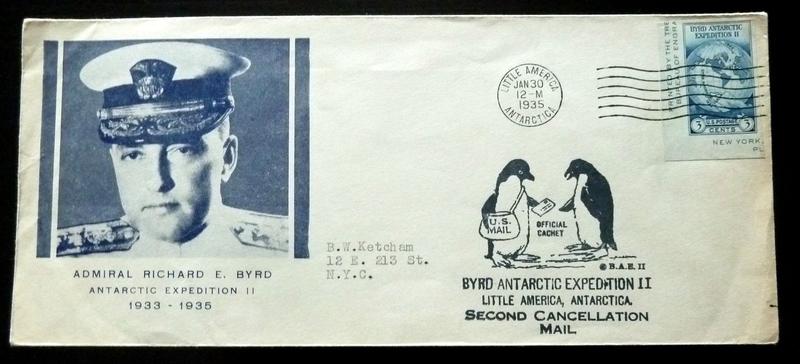
World Heavyweight Champion Joe Louis
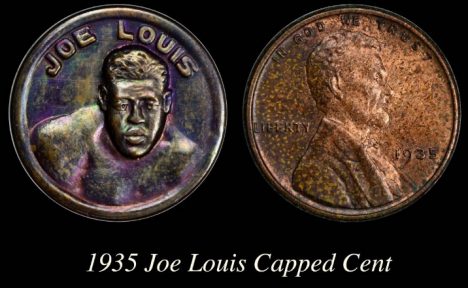
Joseph Louis Barrow, the son of a sharecropper, was born May 13, 1914, in Alabama. He is best known for his legendary matchups against German boxer Max Schmeling. Louis was defeated by Schmeling in the 12th round at Yankee Stadium when they first fought in 1936, but Louis then defeated Schmeling by knockout in the first round of their rematch in 1938 also held at Yankee Stadium, making Joe Louis an American hero. In between the bouts with Schmeling, Louis also fought James J. Braddock for the heavyweight championship and won with a knock-out in the eighth round in June 1937. It was the only time that Braddock had been knocked out. This bout made Louis a National hero and the most popular black man in America. Joe Louis reigned as the world heavyweight champion from 1937 to 1949 and through his demeanor, extraordinary talent, and sympathetic press coverage, Louis represented racial unity and unlimited opportunity. Louis’ championship reign lasted 12 years and he is considered to be one of the greatest heavyweight boxers of all time.
To honor this great American hero, Louis Werner created a die depicting the portrait of Joe Louis along with a simple engraved legend of the boxer’s name, “Joe Louis.” This capped cent is the rarest of all the designs Werner created.
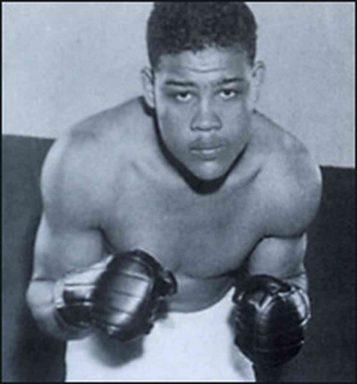
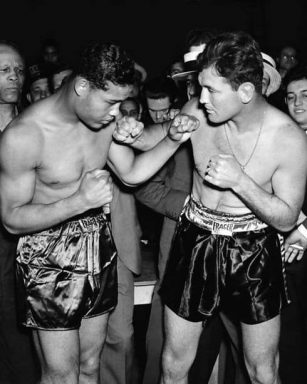
Many various souvenirs have been created to commemorate this extraordinary boxer, Joe Louis, including this popular 1993 postage stamp.
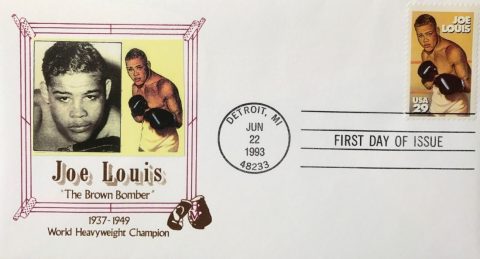
Santa Claus
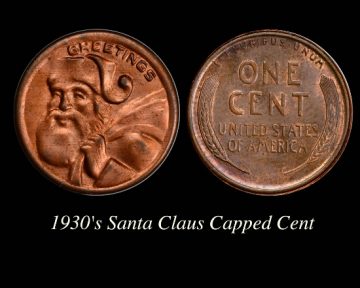
The Santa Claus cents were by far the most popular and best-selling of Werner’s capped cents. Werner crafted three different Santa Claus designs and it is estimated that he made over 750,000 of these capped cents for the Christmas seasons between 1935 and 1938. He would set up his capping machine on a table outside of stores like Bloomingdales and Macy’s in the Manhattan area. The Salvation Army volunteers who rang bells on the city streets during the Christmas season also had a supply of Werner’s capped cents. By donating 10 cents in the Salvation Army kettle, in addition to a “God Bless You” or “Merry Christmas” greeting from the bell ringer, shoppers would receive one of Werner’s Santa capped cents. And if they donated an extra 5 cents, the Santa cent would come in a special red and green “Merry Xmas/Happy New Year” card holder – along with Louis Werner’s contact information on the reverse.
The following Santa Claus capped cents and Christmas cards were included with Louis Werner’s donation of his capping machine and dies to the American Numismatic Association.
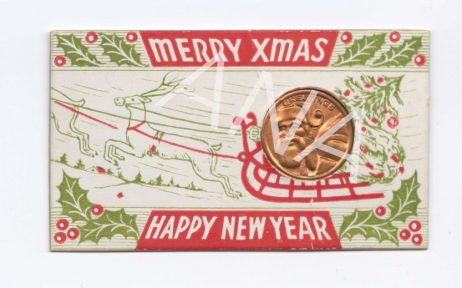
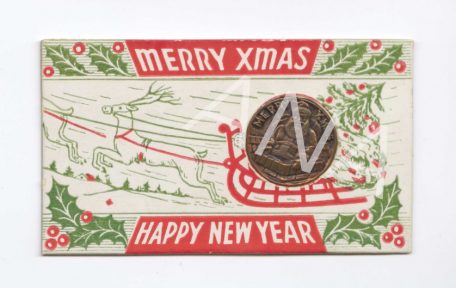
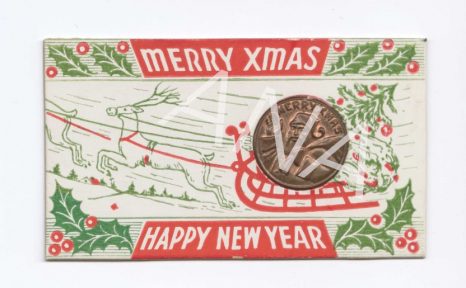
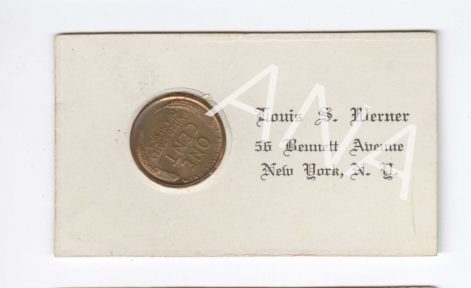
From 1935 to 1937, Werner also ran an ad in the American Numismatic Association’s magazine The Numismatist for his Santa Claus capped cent and greetings card. It first appeared in the October 1935 issue where Werner described his Santa capped cent as “the First Genuine Souvenir Santa Claus Cent Ever Struck.” The next month, Werner’s ad also offered just the capped cent without the greetings card for sale for 5 cents, or 10 cents for pieces that were specially struck over a 1935 Denver wheat cent.
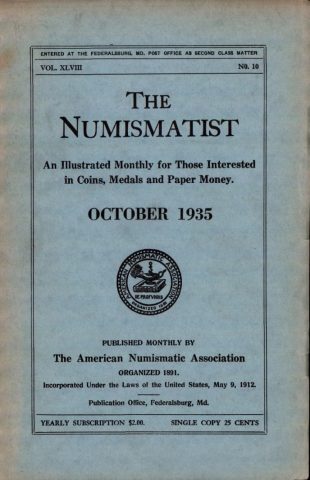
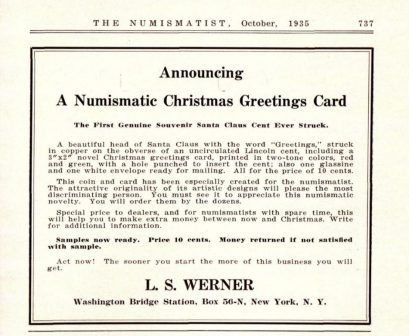
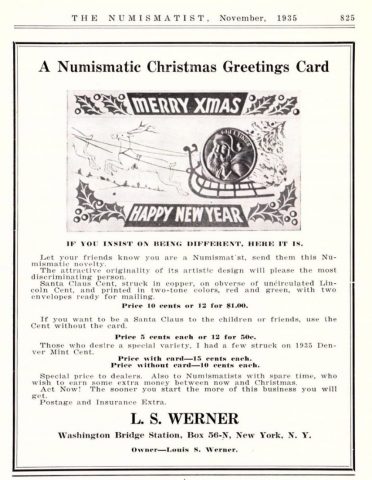
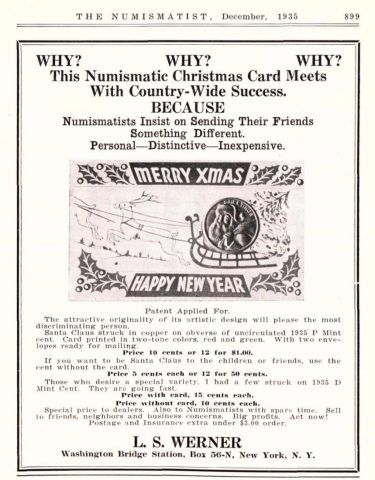
The Lord’s Prayer
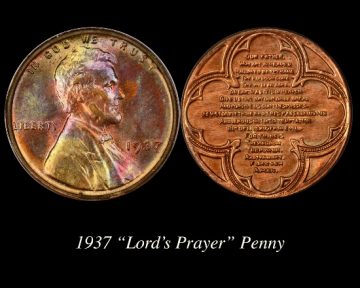
The Lord’s Prayer is a Christian prayer from the Gospels of Matthew and Luke and is used in most Christian churches during their worship services. It is one of the best loved and most spoken prayers in the world, especially on Easter Sundays. There are several different versions of the prayer with the traditional version based on the scriptures from 1611. Also common are versions from the scriptures adopted by the Church of England in 1977 and the Catholic version. Louis Werner created the Lord’s Prayer capped cent and most likely sold them in conjunction with Easter Sunday celebrations. There are also examples of Werner’s Lord’s Prayer design capped over Canadian and Panama cents and gold plated as seen in this special set. The Christmas 1935 capped cent in the set below is silver plated and very scarce.
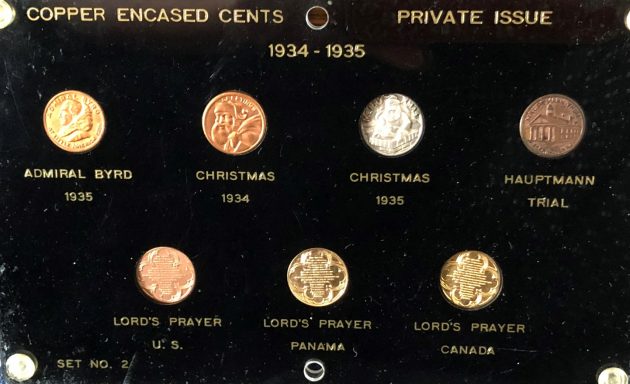
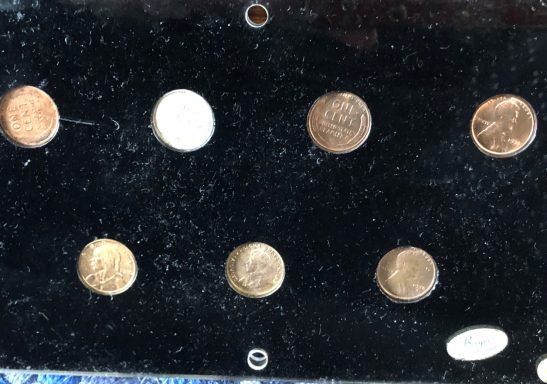
In August 1986, the Presidential Coin and Antique Company out of Alexandria, Virginia, held an auction of various exonumia, including a set of Werner’s capped cents. The auction description of these pieces includes capped cents that are silver and gold plated.
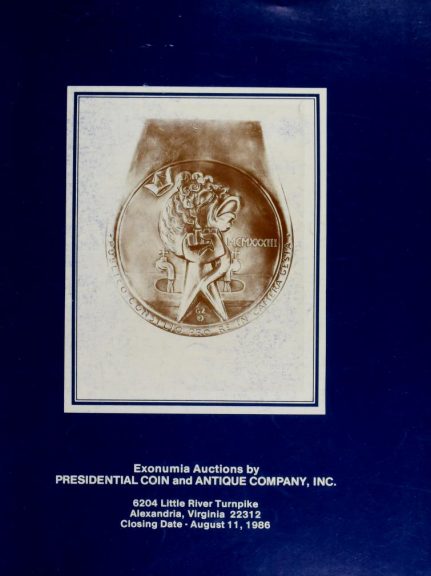
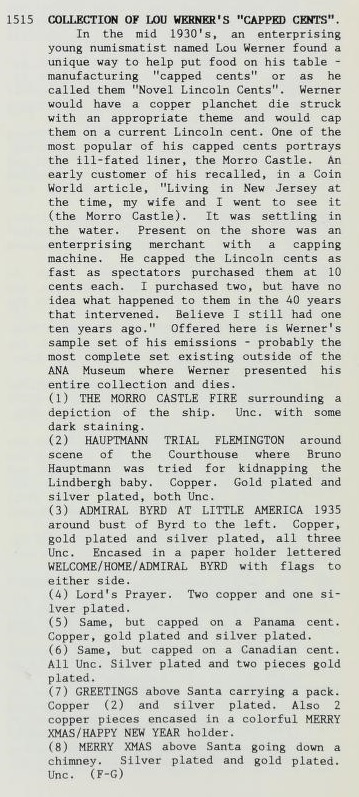
Werner’s Original Capping Equipment
During my research for this article, I discovered that sometime in the 1970’s, Louis Werner donated his capping machine and dies to the American Numismatic Association’s Museum in Colorado Springs, Colorado. I contacted Douglas Mudd, the ANA Museum Director, who was able to locate Werner’s equipment, dies, copper strips, and even several struck capped cent pieces. ANA photographer Rob Kelley was kind enough to take these wonderful photographs of Werner’s original capping equipment and associated pieces.
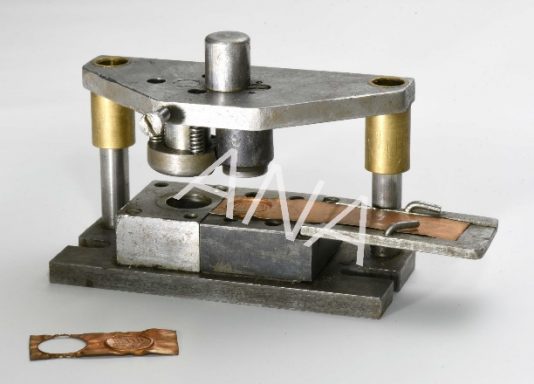
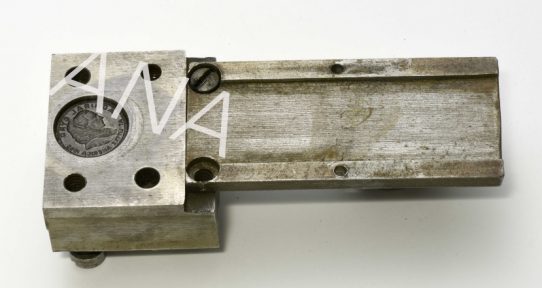
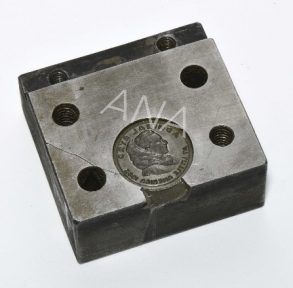
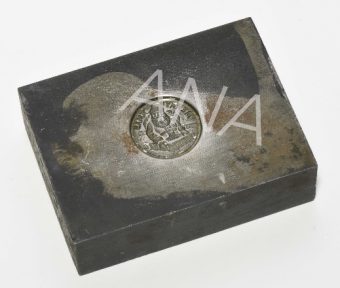
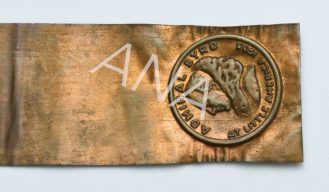
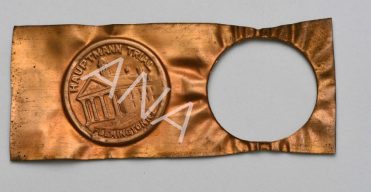
Also, thank you to Todd Pollock for the beautiful close-up photographs of the capped cents from my personal collection that appear in this article. And a very special thanks to the Newman Portal for providing me with a mountain of information on Louis Werner and his capped cents – the Newman Portal is truly a numismatic national treasure!
Today, Werner’s capped cents are very collectible, especially by exonumia enthusiasts. While some of the specific designs are difficult to find, like a couple of the Santa Claus and Joe Louis designs, it is very possible to put together a complete set of these interesting pieces of 1930’s history.
